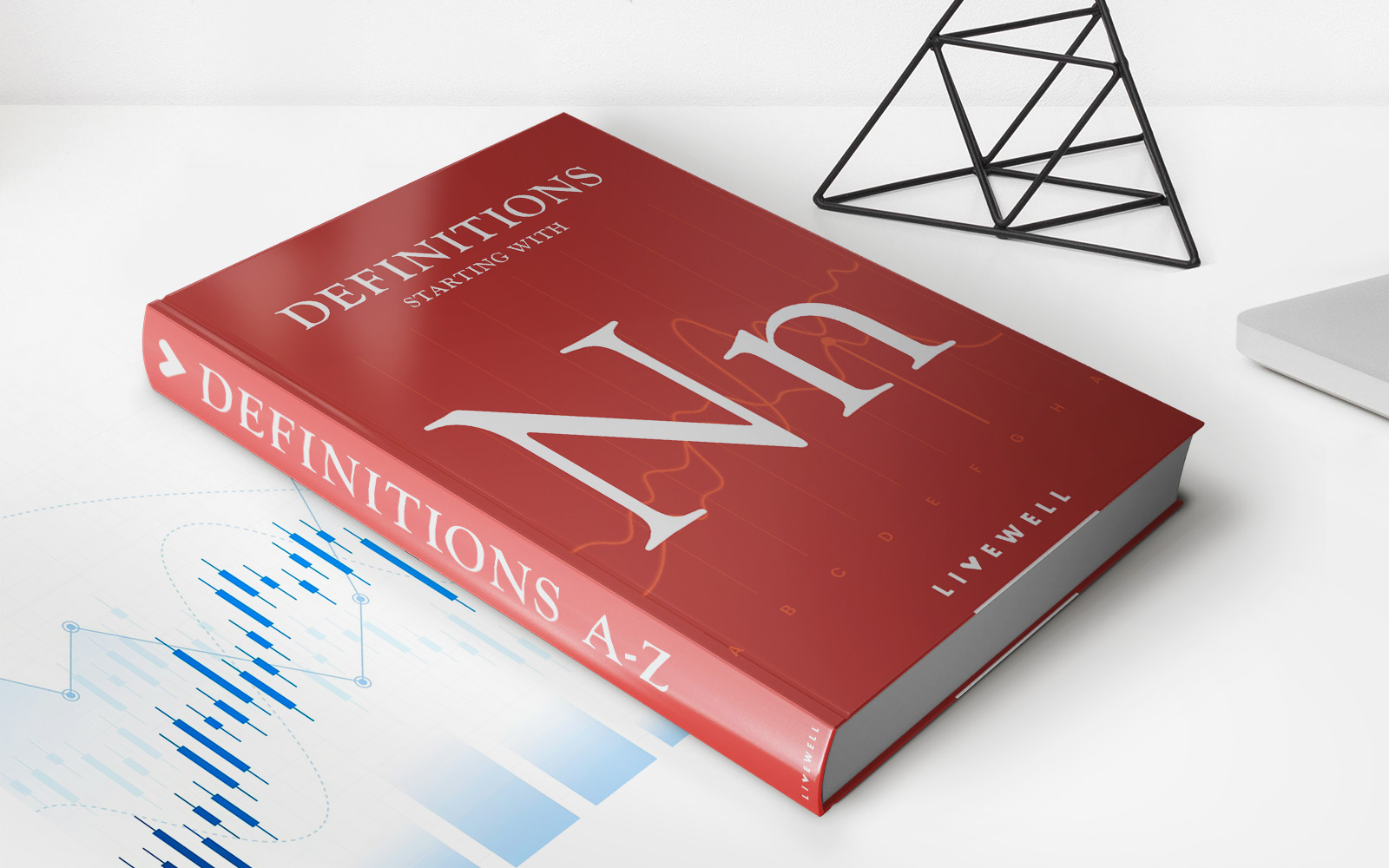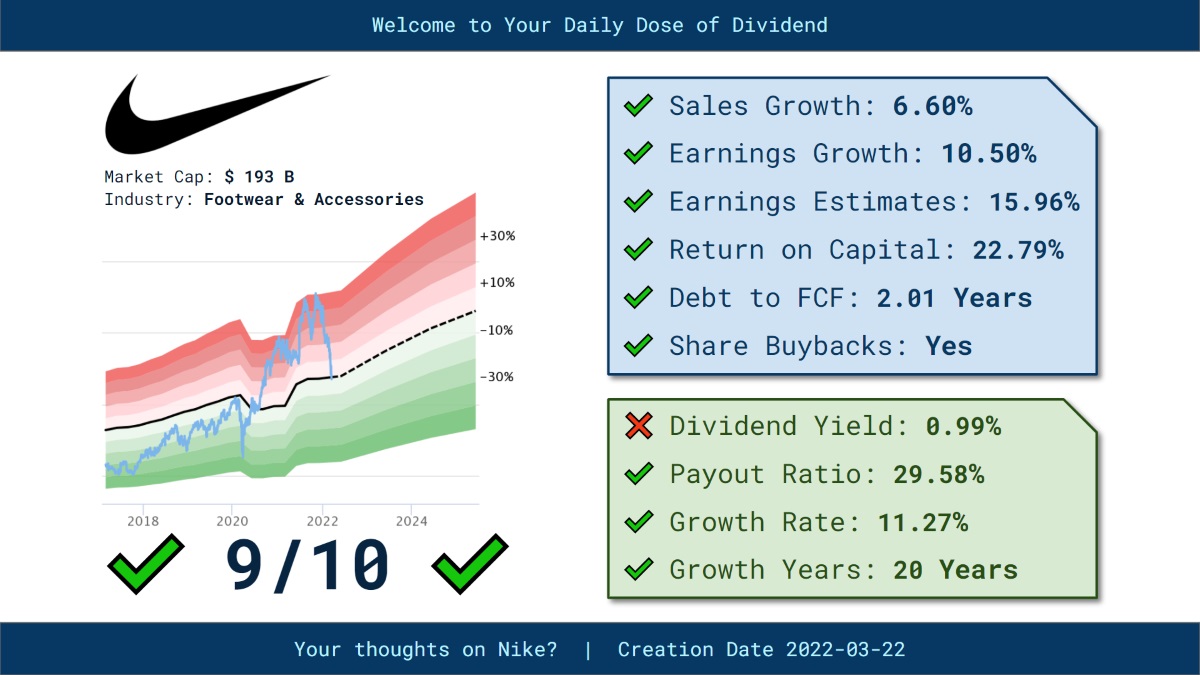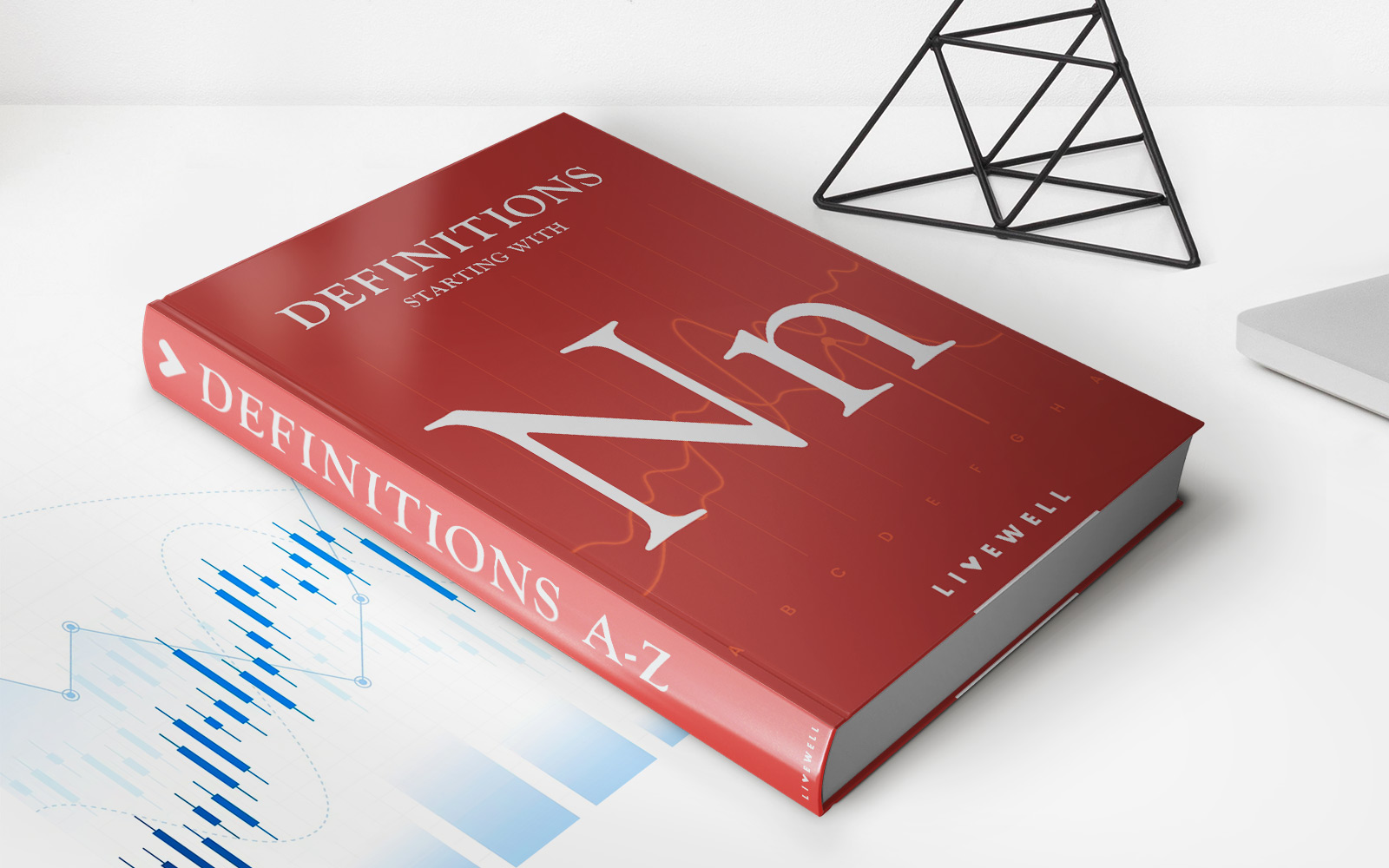

Finance
What Are Traded In Capital Markets
Modified: December 30, 2023
Discover what is traded in capital markets and how it relates to the world of finance. Explore the different types of assets and securities exchanged in this dynamic financial landscape.
(Many of the links in this article redirect to a specific reviewed product. Your purchase of these products through affiliate links helps to generate commission for LiveWell, at no extra cost. Learn more)
Table of Contents
Introduction
Capital markets play a crucial role in the global economy, facilitating the buying and selling of various financial instruments. These markets provide individuals and organizations with the opportunity to invest their money and achieve their financial goals. In this article, we will explore the different types of securities and assets that are traded in capital markets.
Capital markets are where investors can buy and sell financial assets such as stocks, bonds, mutual funds, and more. These markets bring together buyers and sellers, creating liquidity and determining the prices of these assets based on supply and demand. The trading activities in capital markets are usually conducted through various institutions and platforms like stock exchanges, over-the-counter markets, and electronic trading systems.
Investors participate in capital markets to diversify their portfolios, seek attractive returns, and hedge against potential risks. Understanding the different types of securities and assets traded in capital markets is essential for investors to make informed investment decisions. So, let’s dive into the world of capital markets and explore the various financial instruments that can be traded.
Stocks
One of the most well-known and widely traded securities in capital markets is stocks, also known as shares or equities. Stocks represent ownership in a company and are typically issued by publicly traded companies to raise capital.
When you buy stocks, you become a shareholder in the company, which entitles you to a portion of the company’s profits, known as dividends, and the right to vote on certain matters pertaining to the company. The value of stocks can fluctuate based on various factors, such as the company’s financial performance, industry trends, economic conditions, and market sentiment.
Stocks are usually classified into two types: common stock and preferred stock. Common stockholders have voting rights in the company and may receive dividends, but their claims to assets and earnings are subordinate to preferred stockholders and bondholders in the event of bankruptcy or liquidation. Preferred stockholders, on the other hand, have a higher claim on the company’s assets and earnings but may not have voting rights.
Investing in stocks offers potential for capital appreciation and income through dividends. However, it also comes with risks, as the value of stocks can fluctuate significantly. Therefore, it is important for investors to conduct thorough research on the company and its financial health before investing. Many individuals choose to invest in stocks through brokerage accounts or participate in stock markets such as the New York Stock Exchange (NYSE) or NASDAQ.
Bonds
Bonds are also commonly traded in capital markets and represent debt instruments issued by governments, municipalities, and corporations to raise funds. When an investor buys a bond, they are essentially lending money to the issuer in exchange for periodic interest payments and the return of the principal amount at maturity.
Bonds are considered fixed-income securities, as they provide a fixed interest rate over a predetermined period of time. This makes them an attractive investment option for individuals seeking stable income streams and capital preservation. The interest payments are typically made semi-annually or annually and are based on the bond’s coupon rate, which is expressed as a percentage of the face value.
The value of bonds can fluctuate based on changes in interest rates, credit ratings of the issuer, and market conditions. If interest rates rise, existing bonds with lower fixed rates become less attractive, leading to a decrease in their market value. Conversely, if interest rates decline, existing bonds with higher fixed rates become more valuable.
There are various types of bonds available in the market, including government bonds, corporate bonds, municipal bonds, and convertible bonds. Government bonds are issued by national governments and are considered to have low credit risk. Corporate bonds are issued by companies and offer higher interest rates to compensate for the additional risk. Municipal bonds are issued by local governments and are generally tax-exempt at the federal level. Convertible bonds give investors the option to convert the bond into a predetermined number of company shares.
Investing in bonds can provide a stable income stream with relatively lower risk compared to other investment options. They are often seen as a safer haven during periods of economic uncertainty. Bonds can be bought and sold on bond markets and through brokerage accounts, allowing investors to diversify their portfolios and manage risk.
Mutual Funds
Mutual funds are pooled investment vehicles that allow individuals to invest in a diversified portfolio of securities, such as stocks, bonds, and other assets. These funds are managed by professional portfolio managers, who make investment decisions on behalf of the investors. Mutual funds are popular among both individual and institutional investors, providing them with access to a wide range of investment opportunities.
When you invest in a mutual fund, you purchase shares of the fund, and your investment is combined with other investors’ contributions. The fund manager uses the pooled funds to invest in a diversified portfolio based on the fund’s investment objective. This diversification helps spread the investment risk across various assets, reducing the potential impact of a single investment’s performance on the overall portfolio.
Mutual funds offer several advantages to investors. First, they provide professional management, as experienced fund managers actively make investment decisions based on market conditions and the fund’s investment strategy. Second, mutual funds offer diversification, allowing investors to access different asset classes and markets without needing to invest in each individual security.
Furthermore, mutual funds provide liquidity, as investors can typically buy or sell their shares on any business day at the fund’s net asset value (NAV). They also offer flexibility, as investors can choose from various types of mutual funds, such as equity funds, bond funds, index funds, sector-specific funds, and more, to match their investment goals and risk tolerance.
It’s important to note that mutual funds charge fees and expenses, including management fees and potentially sales charges or redemption fees. These fees, along with the fund’s performance, are disclosed in the fund’s prospectus, which investors should review before investing.
Investing in mutual funds can be a convenient and efficient way for individuals to gain exposure to a diversified portfolio of securities managed by professionals. Mutual funds are typically purchased through brokerage accounts or directly from the mutual fund company.
Exchange-Traded Funds (ETFs)
Exchange-Traded Funds (ETFs) are investment funds that trade on stock exchanges, similar to individual stocks. They offer investors exposure to a diversified portfolio of assets, such as stocks, bonds, commodities, or a combination thereof. ETFs have gained popularity among investors due to their flexibility, liquidity, and potential for diversification.
ETFs are designed to track the performance of a specific market index, sector, or asset class. They aim to replicate the performance of the underlying assets they hold. For example, an ETF that tracks the S&P 500 index would strive to mirror the performance of the stocks included in that index.
One significant advantage of ETFs is their tradability. Since they are bought and sold on stock exchanges, investors can purchase or sell ETF shares throughout the trading day at market prices, similar to individual stocks. This provides investors with the ability to take advantage of intraday price fluctuations and implement flexible investment strategies.
ETFs also offer diversification, as they typically hold a basket of securities. This helps spread the investment risk across multiple assets, reducing the impact of a single security’s performance on the overall portfolio. Additionally, ETFs provide transparency, as the holdings of the fund are usually disclosed on a daily basis, allowing investors to see exactly what securities the ETF holds.
There are different types of ETFs available, ranging from equity ETFs, bond ETFs, commodity ETFs, and even specialized ETFs that focus on specific sectors, geographic regions, or investment themes. Some ETFs also offer leveraged or inverse exposure, which are designed to amplify or inverse the daily performance of the underlying assets, respectively.
Investing in ETFs is typically done through brokerage accounts. Investors can choose to hold ETFs for the long term as part of their investment portfolio or trade them actively to take advantage of short-term market movements. As with any investment, it’s important to carefully consider an ETF’s investment objective, fees, and performance before making investment decisions.
Commodities
Commodities play a vital role in the global economy, and their trading is an essential part of capital markets. Commodities are raw materials or primary agricultural products that can be bought and sold, either in physical form or through financial instruments. These assets are often divided into two categories: hard commodities and soft commodities.
Hard commodities include natural resources such as oil, gold, silver, copper, natural gas, and other metals. These commodities are typically extracted, mined, or harvested from the earth’s natural resources. Their prices are influenced by factors such as supply and demand dynamics, geopolitical events, weather conditions, and economic indicators.
Soft commodities, on the other hand, include agricultural products such as wheat, corn, soybeans, coffee, cocoa, sugar, and livestock. These commodities are derived from agricultural activities and are influenced by factors such as weather patterns, global demand, production levels, and government policies. Soft commodities are often subject to seasonal variations and can be more volatile compared to hard commodities.
Investing in commodities can be done through various channels, including commodity futures contracts, commodity exchange-traded funds (ETFs), and commodity mutual funds. Futures contracts allow investors to buy or sell commodities at a predetermined price and date in the future. ETFs and mutual funds provide investors with exposure to a diversified portfolio of commodities, allowing them to participate in commodity price movements without directly owning the physical assets.
Commodity trading can be attractive for investors looking to diversify their portfolios and hedge against inflation. As commodities are often considered real assets, their prices have historically shown some degree of correlation with inflationary pressures. Additionally, commodities can provide a hedge against potential currency devaluations and geopolitical uncertainties.
However, investing in commodities also carries risks. Commodity prices are influenced by various factors, including global economic conditions, political instability, and environmental factors. These factors can lead to significant price fluctuations and volatility in commodity markets. Therefore, it is important for investors to carefully analyze the fundamentals of the commodities they plan to invest in and consider their risk tolerance before entering the commodity market.
Derivatives
Derivatives are financial instruments that derive their value from an underlying asset, such as stocks, bonds, commodities, currencies, or indices. These instruments are used by investors to hedge against risks or to speculate on price movements without directly owning the underlying assets.
One of the key features of derivatives is leverage, which allows investors to control a larger position with a smaller initial investment. This amplifies both potential gains and losses, making derivatives a high-risk investment. Some common types of derivatives include futures contracts, options, swaps, and forward contracts.
Futures contracts are agreements to purchase or sell an asset at a specific price on a future date. They are commonly used by investors seeking exposure to commodities, currencies, or indices. Futures contracts allow for speculation on price movements and provide an effective tool for hedging against market fluctuations.
Options give the buyer the right, but not the obligation, to buy (call option) or sell (put option) an underlying asset at a predetermined price within a specified time period. Options provide investors with flexibility, as they can profit from both upward and downward price movements in the underlying asset.
Swaps are customized agreements between two parties to exchange cash flows based on predetermined conditions. Common types of swaps include interest rate swaps, currency swaps, and commodity swaps. Swaps are often used by businesses and investors to manage interest rate risks, currency fluctuations, or to gain exposure to different markets.
Forward contracts are agreements between two parties to buy or sell an asset at an agreed-upon price in the future. Unlike futures contracts, forward contracts are typically privately negotiated and tailored to the specific needs of the parties involved. Forward contracts are commonly used to hedge against price fluctuations or to facilitate international trade.
Derivatives offer a range of benefits, including risk management, price discovery, and increased market liquidity. They allow investors to hedge their exposure to price fluctuations and manage uncertainties in the market. Additionally, derivatives can be used for speculative purposes, providing potential opportunities for higher returns.
However, trading derivatives involves significant risks, including potential losses that can exceed the initial investment. It requires a thorough understanding of the underlying assets, market conditions, and the complex nature of derivative instruments. Therefore, investors should approach derivatives with caution and seek professional advice if needed.
Foreign Exchange (Forex)
The foreign exchange market, commonly known as Forex or FX, is the largest and most liquid financial market in the world. Forex trading involves buying and selling currencies with the aim of profiting from the fluctuations in their exchange rates. It operates around the clock, five days a week, and facilitates the exchange of currencies between individuals, corporations, banks, and governments.
The Forex market functions as a decentralized global network, with currencies traded in pairs. The value of one currency is expressed in terms of another currency, creating exchange rate pairs such as EUR/USD (euro against US dollar), GBP/JPY (British pound against Japanese yen), or USD/CAD (US dollar against Canadian dollar).
Forex trading offers several advantages to investors, including high liquidity, flexibility, and the potential for profit in both rising and falling markets. The liquidity of the Forex market ensures that traders can enter and exit trades easily, even when dealing with large volumes. This makes it a popular market for day traders and short-term investors.
One unique aspect of Forex trading is the use of leverage, which allows traders to control a large position with a relatively small amount of capital. Leverage amplifies both potential profits and losses, making it important for traders to manage risk and use proper risk management strategies.
Market participants in Forex trading include speculators, who aim to profit from currency fluctuations, as well as businesses and investors engaged in international trade and hedging. Central banks also play a significant role in the Forex market, as they implement monetary policies and intervene in the currency market to stabilize their domestic economies.
To participate in Forex trading, individuals typically open a Forex trading account with a broker who acts as an intermediary between the trader and the market. Trading platforms provided by brokers offer access to real-time price quotes, charting tools, and order placement functionalities.
It’s important to note that Forex trading carries a higher level of risk due to the volatility of currency markets. Factors such as economic indicators, geopolitical events, and market sentiment can all influence currency exchange rates, leading to significant price movements.
Before engaging in Forex trading, individuals should educate themselves on the basics of currency markets and develop a trading strategy. It is also advisable to start with a demo account to practice trading without risking real money, and to seek guidance from experienced traders or financial professionals.
Real Estate Investment Trusts (REITs)
Real Estate Investment Trusts, commonly known as REITs, are investment vehicles that allow individuals to invest in real estate without actually owning the physical properties. REITs provide an opportunity for investors to access and participate in the real estate market, which can offer potential returns and diversification to their investment portfolios.
REITs are companies that own, operate, or finance income-generating real estate, such as apartment buildings, office complexes, shopping malls, hotels, and industrial properties. They must meet certain requirements and follow specific tax regulations to qualify as REITs. These regulations often include distributing a significant portion of their taxable income to shareholders in the form of dividends.
One of the key benefits of investing in REITs is the ability to earn income from real estate properties without the burden of property management. REITs provide a source of passive income as they typically generate revenue through rent or lease payments collected from tenants. The income generated by REITs is then distributed to shareholders in the form of dividends.
REITs allow for diversification within the real estate sector, as they often invest in a variety of properties across different sectors and geographic locations. This diversification helps to spread risk and can provide stability to investors’ portfolios. Additionally, investing in REITs provides an opportunity to participate in the potential appreciation of real estate values over time.
There are two primary types of REITs: equity REITs and mortgage REITs. Equity REITs invest in and own physical properties, while mortgage REITs invest in real estate debt, such as mortgages or mortgage-backed securities. Hybrid REITs, which combine aspects of both equity and mortgage REITs, also exist.
REITs are traded on stock exchanges, making them easily accessible to individual investors. Investors can buy and sell shares of REITs through brokerage accounts, similar to stocks. However, it’s essential to consider the risks associated with investing in REITs. These risks include changes in real estate market conditions, interest rate fluctuations, occupancy rates, and potential regulatory changes.
Before investing in REITs, individuals should carefully research and evaluate the specific REIT’s investment strategy, portfolio composition, management team, and historical performance. It is also advisable to understand the tax implications and consult with a financial professional for guidance.
Options
Options are derivative contracts that give investors the right, but not the obligation, to buy or sell an underlying asset at a predetermined price, known as the strike price, within a specified time period. Options provide flexibility and opportunities for investors to profit from price movements in various financial markets, including stocks, indices, commodities, and currencies.
There are two main types of options: call options and put options. A call option gives the holder the right to buy the underlying asset at the strike price, while a put option gives the holder the right to sell the underlying asset at the strike price.
Options provide several strategic possibilities for investors. Buyers of call options can profit from an expected rise in the price of the underlying asset. If the price of the asset exceeds the strike price before the option expires, the buyer can exercise the option and buy the asset at a lower price. Put options, on the other hand, allow investors to benefit from a potential decline in the price of the underlying asset. If the price falls below the strike price, the buyer can exercise the option and sell the asset at a higher price.
Selling options, also known as writing options, involves taking on the role of the option seller. Option sellers collect a premium from buyers and, in exchange, assume the obligation to fulfill the terms of the option contract if the buyer decides to exercise it. This can be a strategy to generate income or manage existing positions.
Options provide leverage, as investors can control a larger position in the underlying asset with a smaller investment. However, it’s important to note that options are time-limited and can expire worthless if the underlying asset doesn’t move in the anticipated direction or within the specified time period.
Options are traded on options exchanges, and their prices are determined by factors such as the price of the underlying asset, time until expiration, volatility, and market demand. Investors can enter into options contracts through brokerage accounts and have the flexibility to close out their positions by buying or selling options prior to expiration.
Options trading requires a good understanding of the underlying assets, market conditions, and various option strategies. Investors should carefully assess their risk tolerance and consider the potential rewards and risks associated with options before engaging in options trading. It’s advisable to seek education or assistance from experienced professionals and utilize risk management techniques to mitigate potential losses.
Initial Public Offerings (IPOs)
An Initial Public Offering (IPO) refers to the process by which a company offers its shares to the public for the first time. It is an important milestone in a company’s lifecycle, as it transitions from being privately held to becoming a publicly traded company. IPOs give investors the opportunity to invest in the company’s growth potential and share in its success.
When a company decides to go public, it typically works with investment banks and underwriters to facilitate the offering. The underwriters help determine the offer price, offer size, and the timing of the IPO. They also assist with the regulatory and legal requirements associated with the offering.
During an IPO, the company issues new shares to the public, allowing investors to become shareholders. This process provides the company with capital to fund its expansion plans, repay debt, or facilitate acquisitions. In return, investors get an opportunity to own a stake in the company and potentially benefit from future capital appreciation and dividends.
IPOs often generate significant market interest and media attention due to the potential for substantial gains. Investors are attracted by the opportunity to invest in emerging and promising companies before they become widely available in the market. However, IPOs also carry inherent risks, as the market price of the shares can be volatile and may not always reflect the true value of the company.
Investing in IPOs requires careful consideration and due diligence. Investors should review the company’s prospectus, which provides detailed information about its business model, financial performance, risks, and future growth prospects. It is also essential to study the industry landscape, competitive positioning, and evaluate the management team’s track record.
It’s worth noting that IPOs are often reserved for institutional investors or high-net-worth individuals. Retail investors may have limited access to shares at the offer price and may need to wait until after the IPO to purchase shares on the secondary market.
The performance of IPOs can vary widely. Some companies experience significant price increases immediately after going public, while others may see their share prices decline. The ability to accurately predict the future performance of an IPO is challenging and requires a deep understanding of the market, industry, and company fundamentals.
IPOs can be an exciting opportunity for investors to participate in the growth of promising companies. However, it is critical to conduct thorough research, assess risk tolerance, and consider working with a financial advisor to make informed investment decisions in IPOs.
Conclusion
Capital markets play a vital role in the global economy, providing individuals and organizations with opportunities to invest, raise capital, and manage risks. The different types of securities and assets traded in these markets offer a wide range of investment options for investors with diverse goals and risk appetites.
Stocks provide investors with ownership in companies and the potential for capital appreciation and dividends. Bonds offer fixed-income streams with the return of principal at maturity, making them attractive for income-oriented investors. Mutual funds and ETFs provide diversification and professional management for those who prefer a more hands-off approach to investing. Commodities and derivatives allow investors to participate in price movements and manage risk in various markets. Foreign exchange trading offers the potential for profit through currency exchange rate fluctuations. REITs allow investors to access and benefit from the real estate market without owning physical properties. Finally, IPOs offer the chance to invest in emerging companies and potentially benefit from their growth.
It is important for investors to carefully evaluate each investment option and consider their risk tolerance, financial goals, and investment horizon before making decisions. Understanding the fundamentals of each security or asset class, conducting thorough research, and seeking professional advice when needed can help mitigate risks and make more informed investment choices.
Capital markets provide a dynamic and ever-evolving landscape for investors. Staying informed about market trends, economic developments, and regulatory changes can help investors adapt their strategies and make sound investment decisions. Whether it’s building a diverse portfolio, hedging against risks, or seeking attractive returns, capital markets offer a plethora of opportunities for investors to grow their wealth and achieve their financial goals.
Remember, investing always carries some level of risk, and it’s important to do your due diligence and consult with financial professionals as needed. By making informed decisions based on research and thoughtful analysis, investors can navigate the capital markets and potentially realize their financial aspirations.














